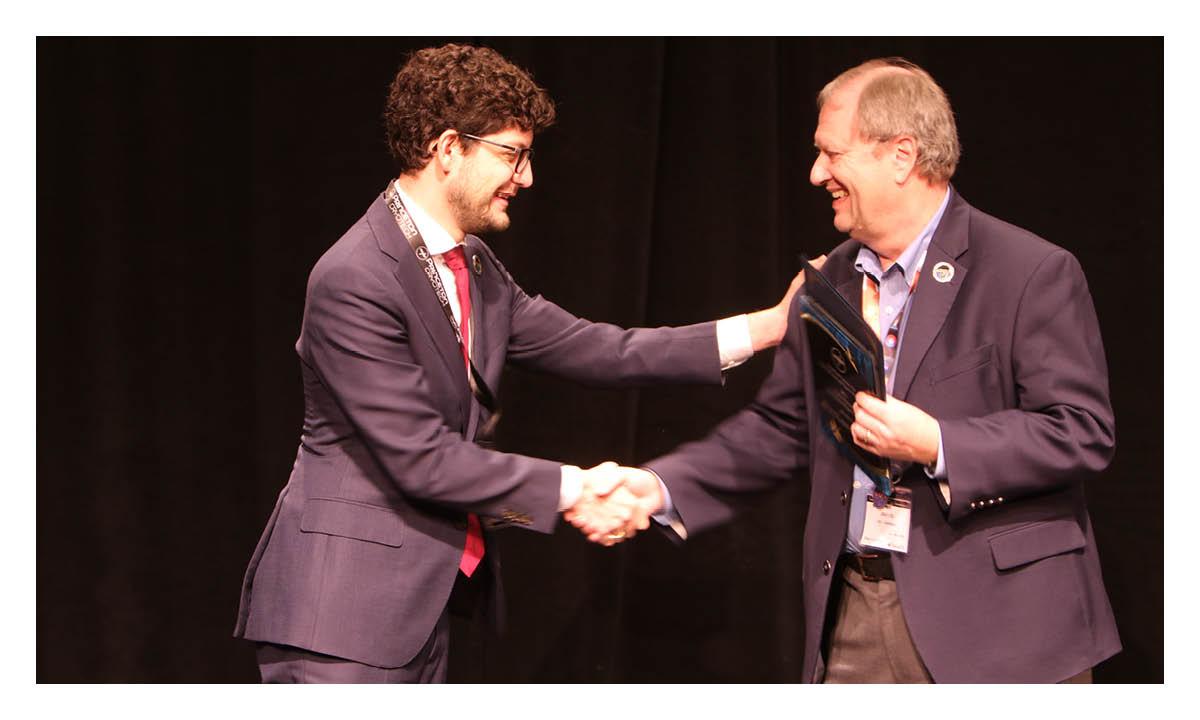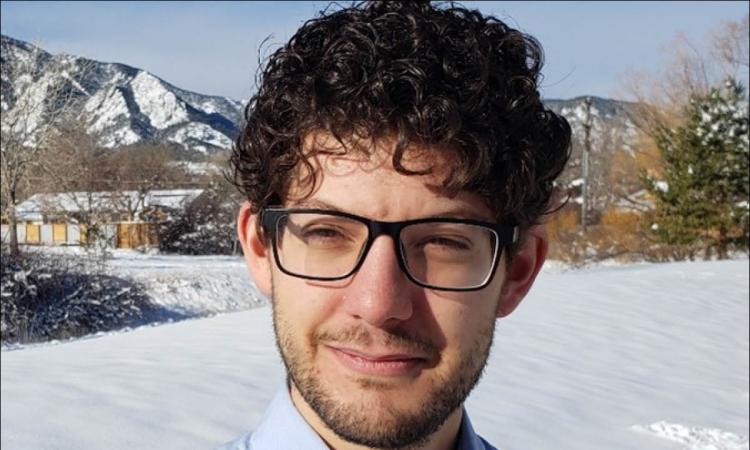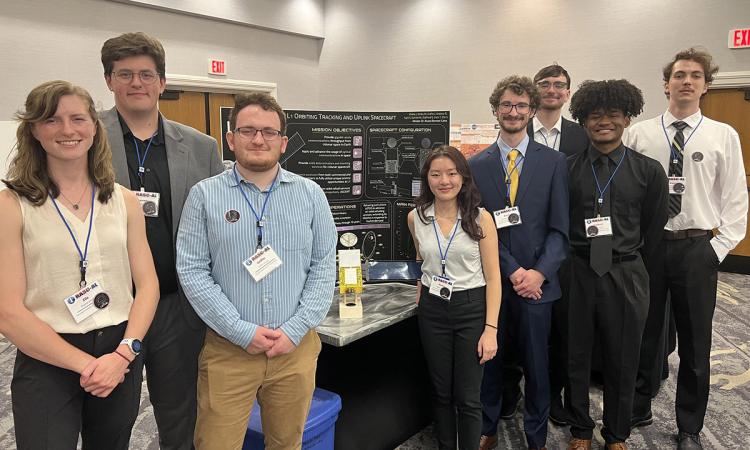Álvaro Romero-Calvo receives the Thora Halstead Early Career Award from ASGSR.

Assistant Professor Romero-Calvo Receiving the Thora Halstead Early Career Award
Assistant Professor Álvaro Romero-Calvo recently received the Thora Halstead Early Career Award from the American Society for Gravitational and Space Research (ASGSR) for his research on low-gravity fluid mechanics. The award is dedicated to Thora Halstead in recognition of the years she spent encouraging young scientists to enter gravitational and space research. It was established in 1994 to honor an early career scientist who exemplifies Halstead’s drive and enthusiasm for science and has made significant contributions to the field. Professor Romero-Calvo was honored with the award during the closing ceremony of the 2023 ASGSR Meeting in Washington, D.C.
What does winning this award mean to you?
I am truly humbled to receive this recognition. ASGSR is the forum that gathers the US-based low-gravity research community. Its members have shaped the field of gravitational research as we know it today, and receiving this award from their hands is both an honor and a great responsibility. Now that we’re returning to the Moon and building a commercial low earth orbit (LEO) economy, understanding the low-gravity environment becomes more important than ever.
What is the importance of the role of gravity in your research?
Gravity is a curtain that, when removed, unveils a fascinating and highly unintuitive new reality. We’re so used to it that we don’t realize how much it influences everything around us. However, an orbiting spacecraft is in a free-fall (or microgravity) condition, meaning that an internal observer won’t feel its effects. Even at the surface of the Moon, gravity is only about one-sixth of that on Earth. Our group studies the behavior of liquids and granular materials in these environments, where interactions that we usually neglect on Earth suddenly become relevant and develops space technologies that either deal with or make use of them.
How do you feel that you have advanced gravitational and space science?
The whole economic proposition of sustained human presence in space depends critically on low-gravity fluid systems. Their control has traditionally been achieved using capillary or centripetal forces, which appear on the curved edge of a glass of water or a washing machine, respectively. However, new space engineering problems are pushing fluidic systems to their limits, questioning the viability of such traditional solutions. I think that the major contribution of the Low-Gravity Science and Technology Laboratory at Georgia Tech has been providing technical alternatives based on the application of electromagnetic forces. As a result, we are creating a family of technologies that benefit from lower complexity, higher reliability, and lower mass and power consumption with respect to the state of the art. Examples include oxygen production for life support and water-based propulsion, biological sample preparation, CubeSat thermal control, or resilient space optics.
What impact will your research have on the field of gravity and space exploration?
The Washington Post recently wrote that “space travel is creating an energy that hasn’t been seen since the days of Apollo.” Supporting this new space age right at its inception is a once-in-a-lifetime opportunity to steer the future of space exploration, and that’s what the Low-Gravity Science and Technology Lab intends to do. We are developing fluid management technologies that will help astronauts at the surface of the Moon or at the upcoming commercial LEO Destinations (CLDs), which will eventually replace the International Space Station. By doing so, we are also learning about the fundamental mechanisms that govern the behavior of fluids on Earth, supporting the energy transition by enabling more efficient water electrolyzers or providing new optical systems for ground-based telescopes.
What is next for your research?
One of the main recommendations of the recent 2023-2032 decadal survey on Biological and Physical Sciences is strengthening the science exchange between biological, physical, and human research programs in space. In my experience, it is in these multidisciplinary intersections that most progress is made. For instance, we have just started to exploit our background on electromagnetic modeling to study lunar dust dynamics as part of a NASA SSERVI center led by Professor Thomas Orlando, and this effort will end up defining how humans operate at the surface of the Moon. We have exciting times ahead of us, and my students and I are eager to work with our colleagues in the field to help shape the future of space exploration!
Related Stories:
Tapping into the Potential on the Moon
AE Assistant Professor Álvaro Romero-Calvo’s research connects space engineering and fluid mechanics, and he is studying how to split water into oxygen and hydrogen with the aid of magnetic forces. This research could put humans one step closer to extended stays on the moon and make it a fueling station for those traveling deeper into space. Water may hold the key to more efficient deep space exploration.
NASA Selects Georgia Tech’s Team LOTUS for Best Technical Paper Award
The team consisted of aerospace engineering students Maya Hasumi, Mollie Johnson, Griffin Jourda, Andre Magyar, Garrett Matheson, Andrew Reagan, Sajni Saravanan, Stafford Saxton, Elle Smith, Zach Turnage, faculty advisor Álvaro Romero-Calvo and conference advisor Uttoreo Saha.

